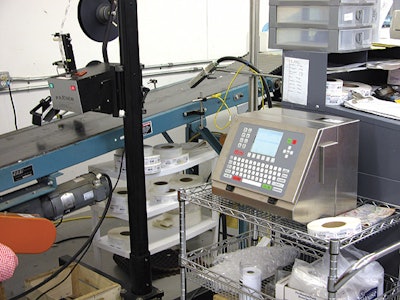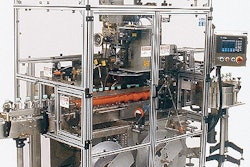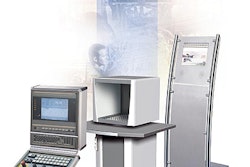
As produce marketers nationwide find themselves facing new requirements calling for country-of-origin labeling (COOL), some are re-evaluating their approach to coding and marking.
C.L. Henderson of Hendersonville, NC, is a good example. Until last spring, a pressure-sensitive labeler was used to apply pre-printed labels to the top of each shrink-wrapped tray of produce to indicate produce variety. On the bottom of the tray, workers applied a sticker carrying a best-if-used-by date.
This approach was greatly improved with the installation of a Ci1000 continuous ink-jet coding system from ID Technology.
“It was the country-of-origin legislation that got us thinking this way,” says company president Alan Henderson. “The ink-jet system is capable of printing four lines of text, and one of those lines identifies country of origin. On another line, we ink jet the best-if-used-by date, so our operators no longer have to turn the trays over and apply that information by hand. Also ink-jet printed is a lot and ID code.”
Henderson is quick to point out that ink-jet coding on film-wrapped veggies is no walk in the park.
“As we compared the ID Technology system with others we evaluated, we were impressed with how reliable it was,” says Henderson. “Remember, when you’re printing on film-wrapped produce, you’re talking about a pretty uneven surface. With this system we have, we’re throwing the ink one to two inches in some cases, and yet the resulting code is perfectly readable.”
Henderson also likes not having to inventory labels preprinted with produce variety and country of origin. This info is now stored in memory in the Ci1000 and accessed at a touch screen as needed.
Ink-jet coding isn’t the only upgrade made recently at C.L. Henderson. The firm also has invested in decorated shrink film for the black expanded polystyrene trays it sends to the marketplace. Supplied by Robbie Manufacturing, the film is typically a 60-ga polyvinyl chloride printed flexo in four colors plus varnish. It’s applied by one of two Ulma shrink film applicators.
Operators manually load the EPS trays, which typically hold anywhere from three to a dozen pieces of produce. Trays move through the Ulma system at speeds as high as 60/min, and immediately afterwards they pass through an Auto Labe pressure-sensitive labeler that puts a bar-code label on each pack to make the pack scannable at the supermarket checkout counter. Next is the Ci1000 ink-jet printer, which prints country of origin, lot identification, and sell-by date.
Henderson readily acknowledges that the tray-wrapped approach to produce marketing carries an upcharge compared to the more conventional method of simply shipping produce to retailers in bulk. But some of the cost is passed along, he says, and consumers don’t mind paying it.
“It’s partly a security thing,” says Henderson. “They like knowing that the cucumbers or green beans they buy have not been handled by countless fellow shoppers. They also appreciate the convenience. They don’t have to weigh or bag anything. It’s just grab and go.
“Basically,” he continues, “we’re trying to do in produce what the meat industry has succeeded in doing with meat. It’s a case-ready concept. It’s working, too. Supermarket chains love it, and consumers do, too.”


























